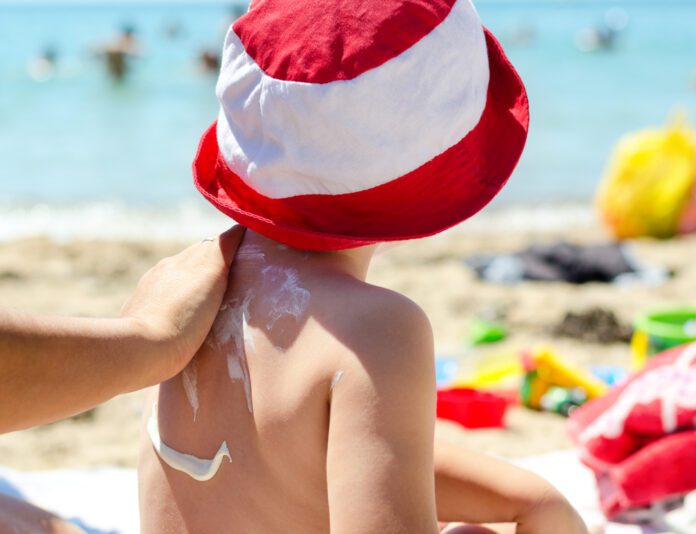Overview Of Skin Protection From The Sun
Many skin changes, such as skin cancer, wrinkles, and age spots are caused by improper skin protection from the sun. This is because the damage caused by the sun is permanent.
Sun Exposure and Skin Changes
The two types of sun rays that can injure the skin are ultraviolet A (UVA) and ultraviolet B (UVB). UVA affects the deep layers of skin. UVB damages the outermost layers of the skin and causes sunburn.
The best way to lower your risk of skin changes is to protect your skin from the sun. This includes using sunscreen and other protective measures.
- Avoid sun exposure, particularly from 10 a.m. to 4 p.m. when UV rays are the strongest.
- Remember that the higher the altitude, the quicker your skin burns with sun exposure. The start of summer is when UV rays can cause the most skin damage.
- Use skin protection from the sun, even on cloudy days. Clouds and haze don’t protect you from the sun.
- Avoid surfaces that reflect light, such as water, sand, concrete, snow, and areas that are painted white.
- DO NOT use sun lamps and tanning beds (tanning salons). Spending 15 to 20 minutes at a tanning salon is as dangerous as a day spent in the sun.
Sun-Protective Clothing
Adults and children should wear clothing to protect skin against the sun. This is in addition to applying sunscreen.
Suggestions for clothing that provides skin protection from the sun include:
- Long-sleeve shirts and long pants. Look for loose-fitting, unbleached, tightly woven fabrics. The tighter the weave, the more protective the garment.
- A hat with a wide brim that can shade your whole face from the sun. A baseball cap or visor does not protect the ears or sides of the face.
- Special clothing that protects the skin by absorbing UV rays.
- Sunglasses that block UVA and UVB rays, for anyone above age 1.
Sunscreen Guidelines
It is important not to rely on sunscreen alone for skin protection from the sun. Wearing sunscreen is also not a reason to spend more time in the sun.
The best sunscreens to choose include:
- Sunscreens that block both UVA and UVB. These products are labeled as broad spectrum.
- Sunscreen labeled SPF 30 or higher. SPF stands for sun protection factor. This number indicates how well the product protects the skin from UVB damage.
- Those that are water resistant, even if your activities do not include swimming. This type of sunscreen stays on your skin longer when your skin gets wet.
Avoid products that combine sunscreen and insect repellent. Sunscreen needs to be reapplied often. Insect repellent applied too often could be harmful.
If your skin is sensitive to the chemicals in sunscreen products, choose a mineral sunscreen such as zinc oxide or titanium dioxide for maximum skin protection from the sun.
Less expensive products that have the same ingredients work as well as expensive ones.
When applying sunscreen:
- Wear it every day when going outdoors, even for a short time.
- Apply 30 minutes before going outdoors for best results. This allows time for the sunscreen to be absorbed into your skin.
- Remember to use sunscreen during the winter.
- Apply a large amount to all exposed areas. This includes your face, nose, ears, and shoulders. DO NOT forget your feet.
- Follow package instructions about how often to reapply. This is usually at least every 2 hours.
- Always reapply after swimming or sweating.
- Use a lip balm with sunscreen.
Sun Protection And Children
While in the sun, children should be well covered with clothing, sunglasses, and hats. Children should be kept out of the sun during peak sunlight hours.
Sunscreens are safe for most toddlers and children. Use skin protection products from the sun that contain zinc and titanium, as they contain fewer chemicals that may irritate young skin.
DO NOT use sunscreen on babies younger than 6 months without talking to your doctor or pediatrician first.



